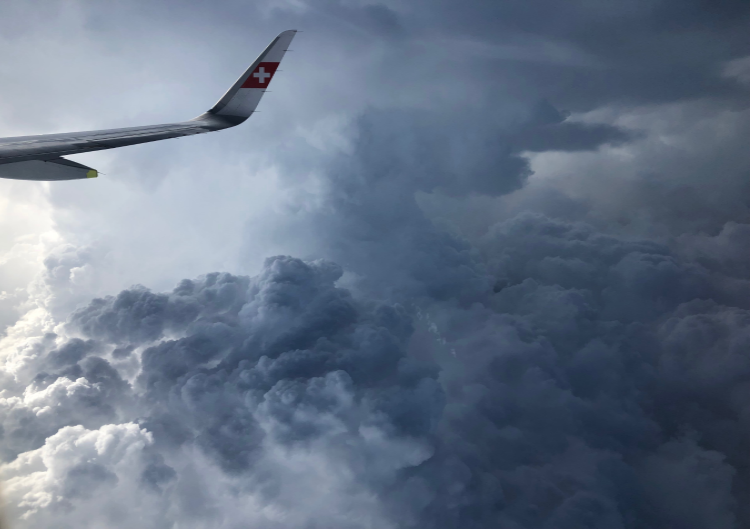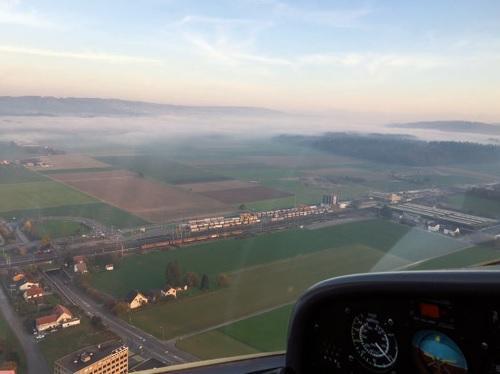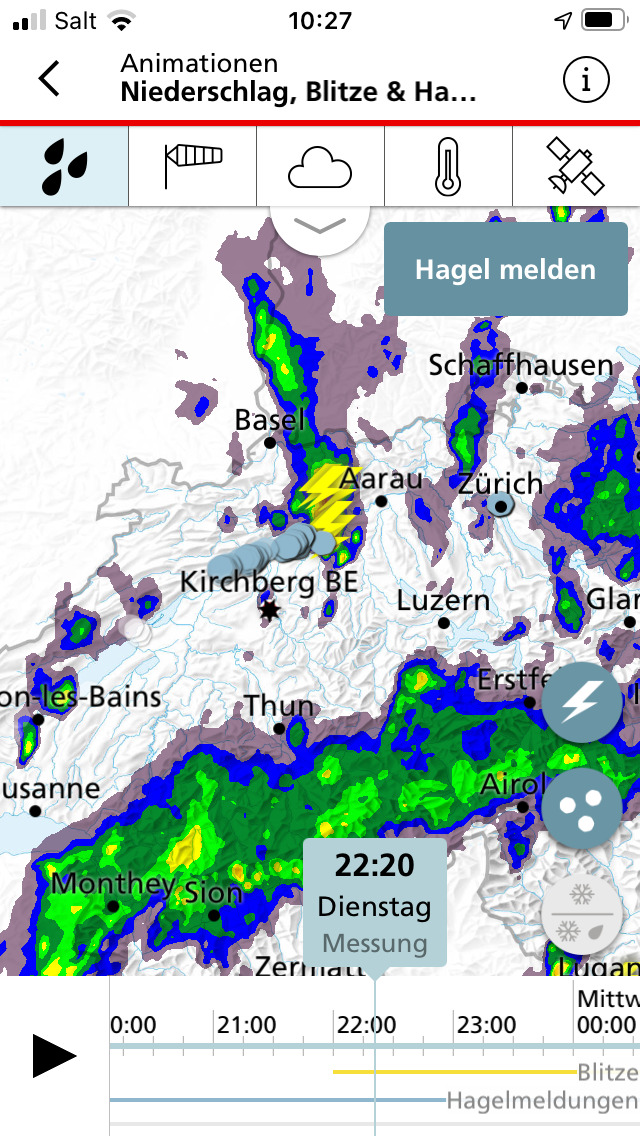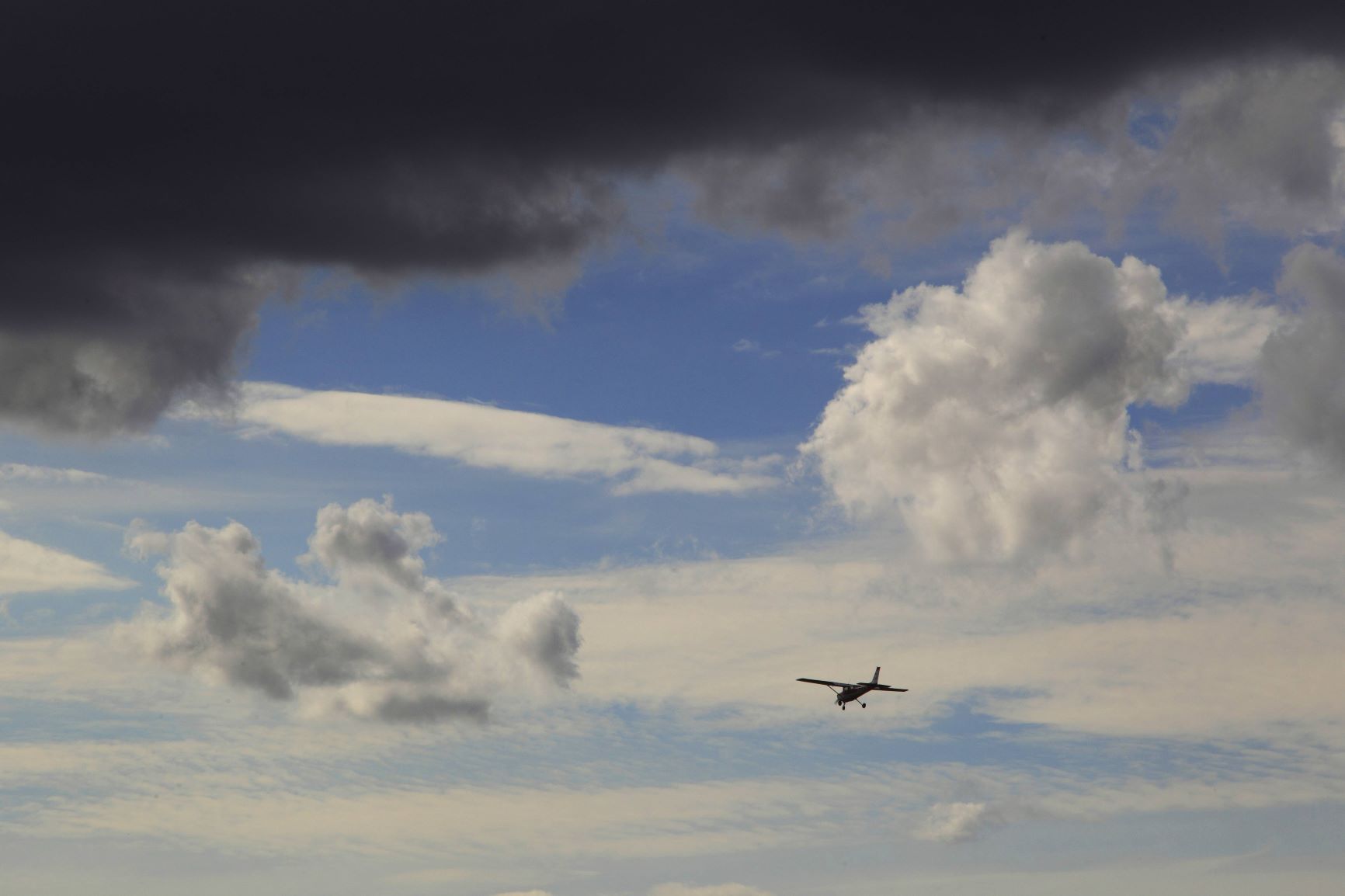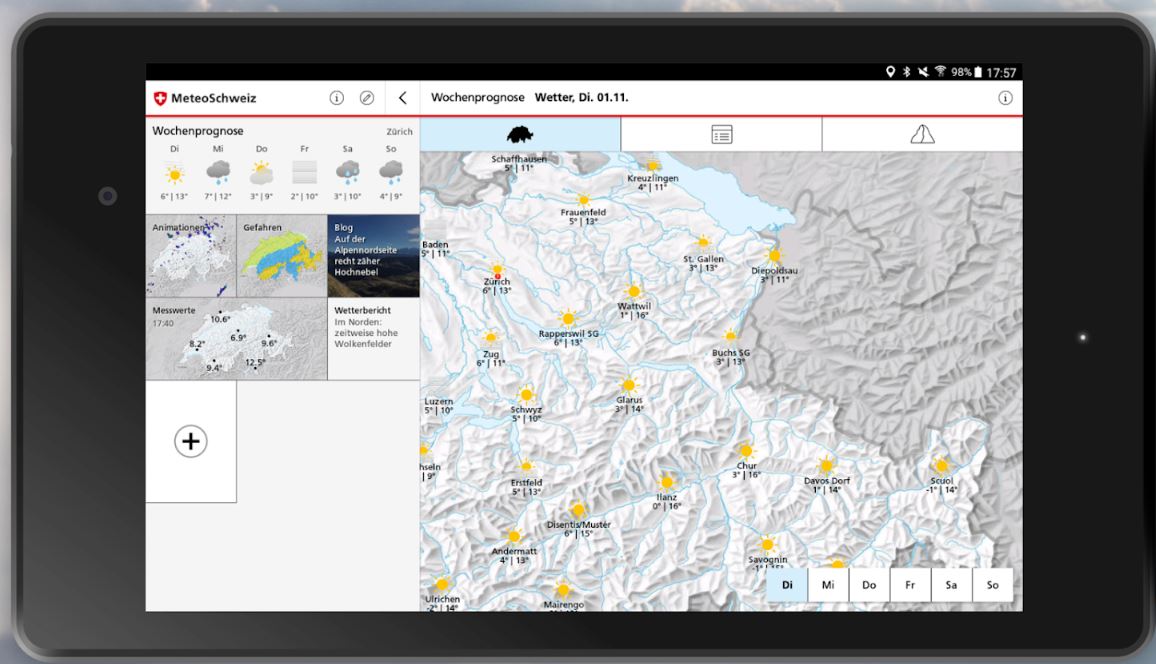With autumn comes the return of the foggy season

How are the various fog phenomena reported or forecast in METAR or TAF? And what was that again about the different types of fog? What are the chances of it clearing up? And when can we expect dense fog, and when can we expect high fog that is still suitable for VFR? We will address the issue of fog using a few examples so that no questions remain unanswered the next time fog rolls in.
Visibility restrictions in METAR and TAF
By definition, fog is when the meteorological visibility (Met Vis) is less than 1000 meters – in METAR, this is indicated by FG. However, there are also fog phenomena where METAR indicates higher visibility. These special cases are (details below):
VCFG (vicinity fog), Met Vis >1000 meters
MIFG (shallow fog), Met Vis 1000–9999 meters
BCFG (patches of fog), Met Vis < 1000–9999 meters
PRFG (Partial Fog), Met Vis< 1000 – 9999 meters
FZFG (Freezing Fog), < 1000 meters Vis
However, haze is also an important issue in autumn. This is reported as BR when the Met Vis is 1000-5000 meters due to a moist ground layer. The term comes from the French word brume and is also called mist in aviation jargon. Moist haze usually occurs in the morning when fog dissipates or in the evening when fog forms. BR can also occur throughout the day in stable high-pressure conditions in autumn. With the upper limit of the haze in the afternoon hours, the fog upper limit for the following day can be easily estimated in persistent weather conditions. BR is therefore considered a good indicator of the humidity and thus the fog susceptibility of the ground layer. So if you read BR in the METAR, you should also consult the TAF for the possible time of fog formation.

METAR example: VRB01KT 4200 BR NSC 14/10 Q1016 NOSIG
VCFG
If there is fog outside the airport area but within a 16-kilometer radius of the airport, this is indicated by Vicinity Fog VCFG. VCFG means that fog is also possible directly on the airfield. For TAF and METAR TREND (2-hour forecast at the end of the METAR for LSZH and LSGG), note the corresponding time stamp.
Example METAR: VRB01KT 9999 VCFG FEW070 11/11 Q1016 BECMG PRFG
MIFG
MIFG (MI stands for the French word mince) is ground or grass fog that is no higher than approx. 2 meters. In aviation terminology, it is also called shallow fog. With this type of fog, the Met Vis can be more than 1000 meters, as the Met Vis is determined at 2 meters above ground level. MIFG occurs mainly in early autumn after clear nights. As a rule, meadow fog is harmless and usually disappears 30 minutes after sunrise. However, MIFG can also be a sign of further fog development, especially if it occurs during the night: study TAF and METAR TREND.
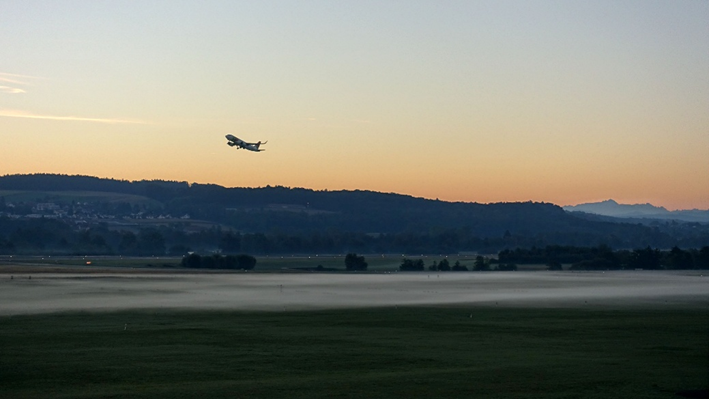
Example METAR: VRB01KT 9999 MIFG NSC 08/07 Q1016 NOSIG
BCFG
BCFG (BC stands for the French word banc) are unrelated fog banks that can impair visibility. In aviation, they are often referred to as patches of fog. BCFG are usually the precursor to FG in the early morning or evening hours. BCFG can indicate developing fog: pay attention to TAF and, if necessary, METAR TREND.
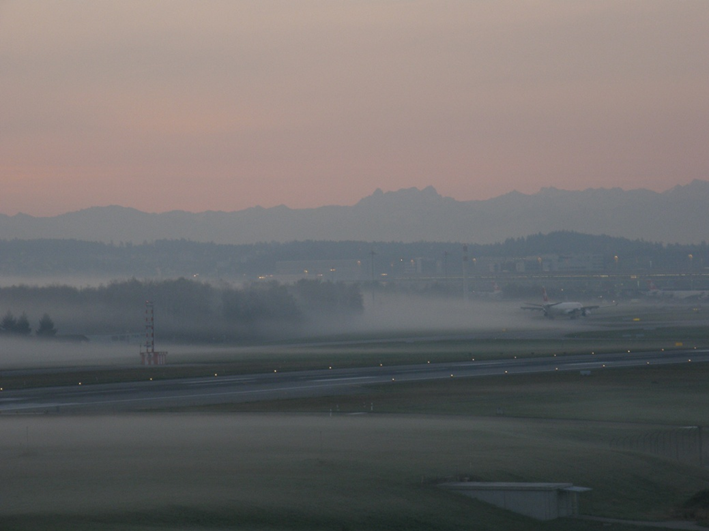
Example METAR: VRB01KT 4500 BCFG NSC 08/07 Q1016 BECMG 1200 PRFG
PRFG
With PRFG (Partial Fog), parts of the airport are in fog. PRFG is usually reported in combination with a sector visibility. PRFG can occur when fog is forming or dissipating and is an indication of a change in the situation: pay attention to TAF and METAR TREND.

Example METAR: VRB01KT 7000 0800N PRFG FEW070 Q1016 NOSIG
FG
FG is reported when the entire airport is covered in fog. If temperatures are below freezing, FZFG is reported. FG can persist for longer depending on the fog situation. The TAF forecasts whether and when a change can be expected. Normally, the cloud base is no longer visible in fog. Instead of the cloud base, the vertical visibility VV is reported. At the VV level, the pilot can see the runway lighting. Because this is a vertical distance, the unit is the same as for the cloud base in Hekto FT.

METAR example: VRB01KT 0500 FG VV002 04/04 Q1016 NOSIG
The different types of fog
The fog phenomena described above in METAR and TAF describe the basic type of radiation fog. On clear and windless nights (high pressure weather), the ground cools down and with it the air above it. If the temperature drops to the dew point, dew forms in the first phase, and if it cools further, BR, MIFG, BCFG, PRFG, and FG form, or FZFG below 0 degrees. There needs to be a corresponding amount of moisture, which can be recognized by a small spread (difference between temperature and dew point). Radiation fog is also favored when there has been precipitation the day before and the sky clears up at night.
We refer to high fog when the fog layer no longer lies on the ground. In the METAR, for example, OVC030 is then indicated. High fog occurs in the Swiss Mittelland in connection with the Bise wind: the stronger the Bise, the higher the high fog, as it is “pumped up” by the Bise. This means that a VFR flight can still be carried out under the gray cover if the base is high enough.
Orographic fog describes a cloud that rests on the topography, for example in areas of stagnation in the Jura or the Alps.
Advection fog is mainly observed on coasts when warm, moist air cools over a cold sea current, causing condensation.
How does fog dissipate?
The radiation fog that frequently occurs in our region is “baked away” during the day by the warming effect of the sun. The shorter the day and the less solar energy there is, the more persistent the fog.
You wouldn’t think so, but fog and high fog are sensitive to changes. Pressure changes, wind, and the influx of dry and/or cold air are also considered good “fog killers.” Medium-high cloud fields also work very well, dispersing the fog with their counter-radiation. In other words, the more persistent a high-pressure or bisen situation is, the more persistent the fog or high fog will be. If the weather changes, the chances of the fog clearing also increase.
We conclude this article on fog with a textbook example from LSMM airport. The fog cleared within just one hour this morning.

The METAR and TAF designations can be found in a handy format in the MeteoSwiss leaflet “Aviation weather information in Switzerland.” The brochure can also be downloaded electronically at:
Image source: MeteoSwiss
Safety first, every flight, every time.
Jetzt registrieren!
Um alle Funktionen zu nutzen, erstellen Sie einfach ein neues Konto. Dann können Sie Artikel für später vormerken, Themen abonnieren und regelmäßige Aktualisierungen für Ihre Themen per E-Mail erhalten.







